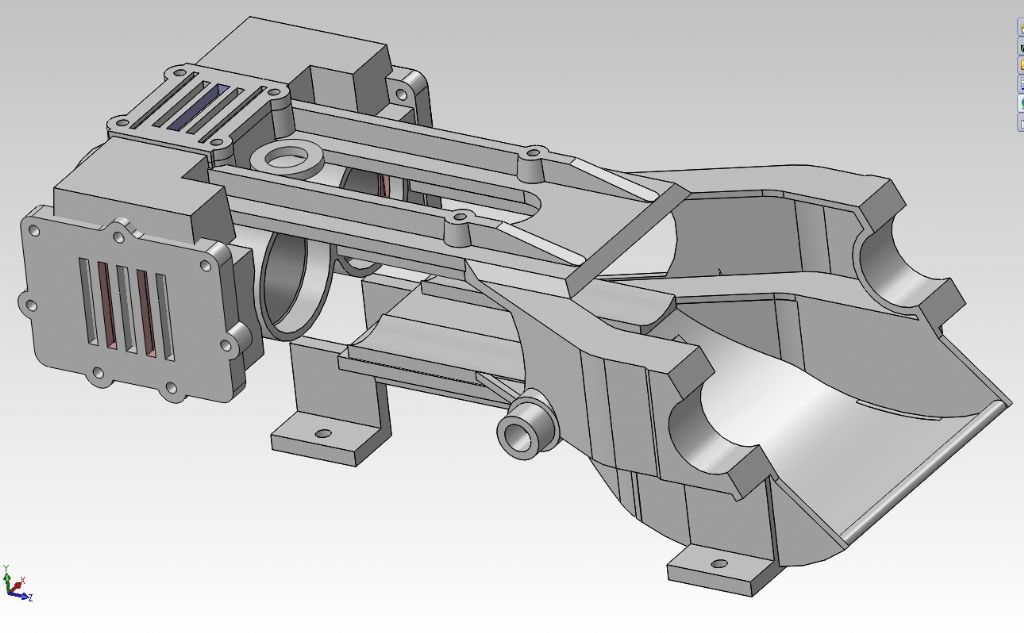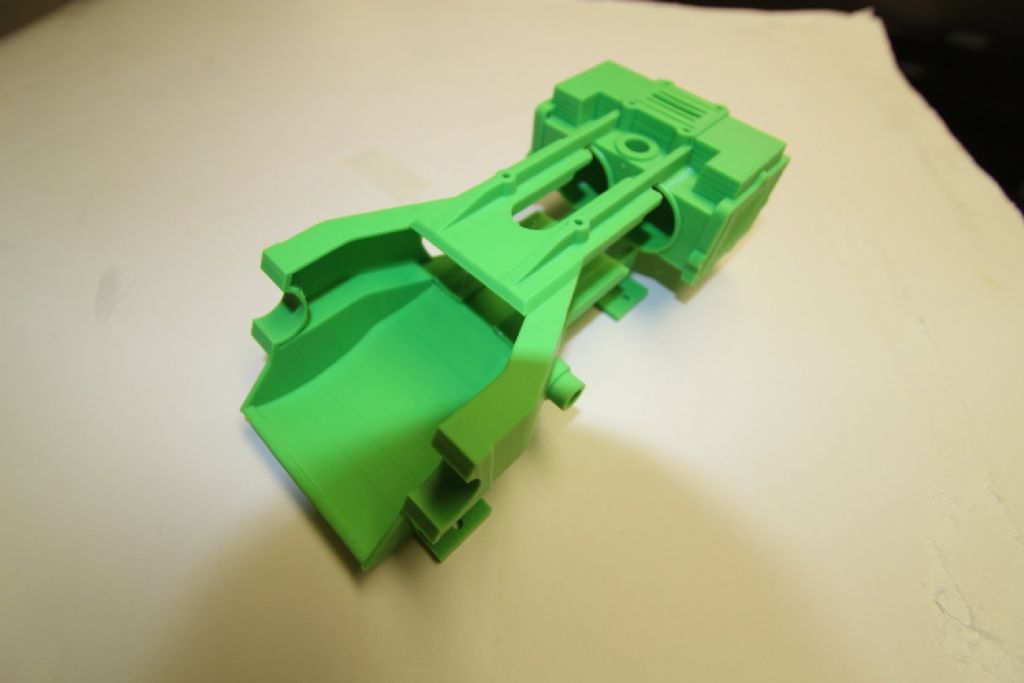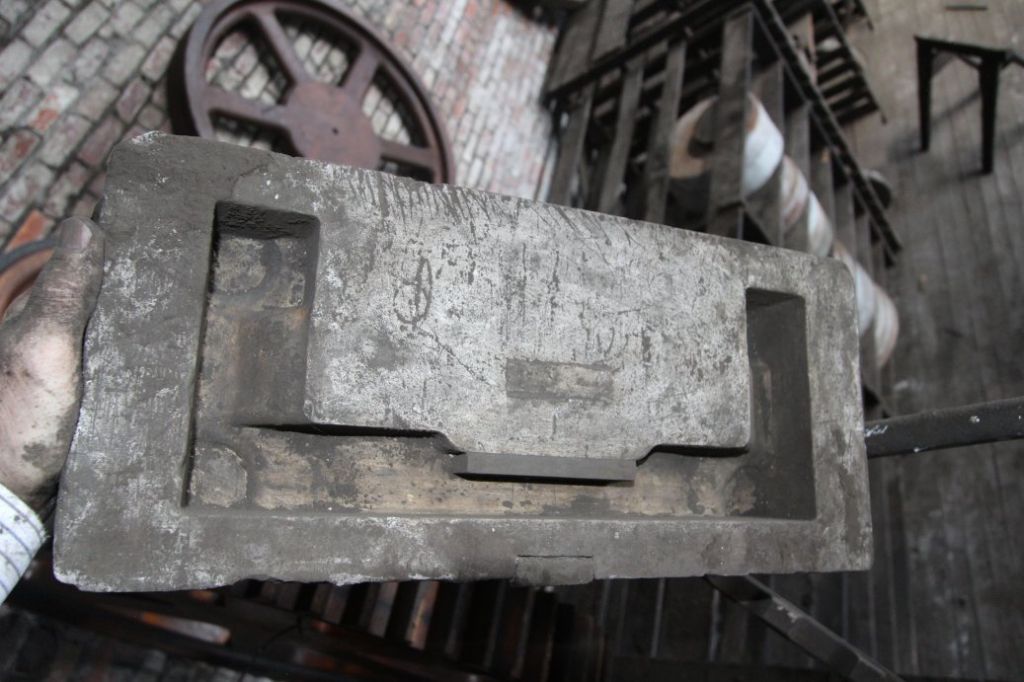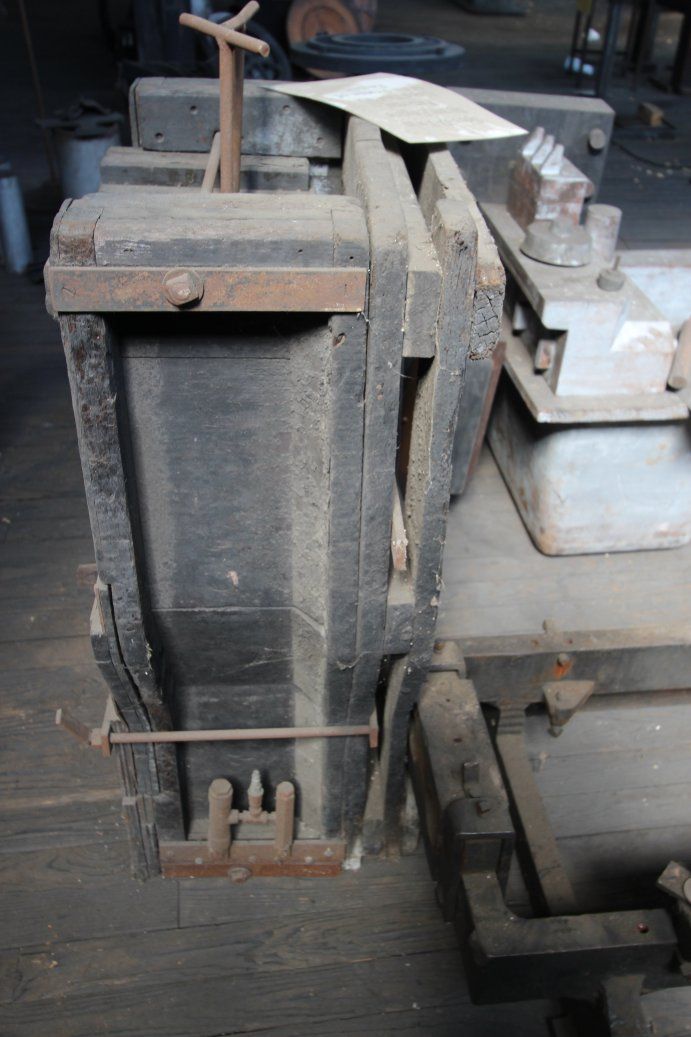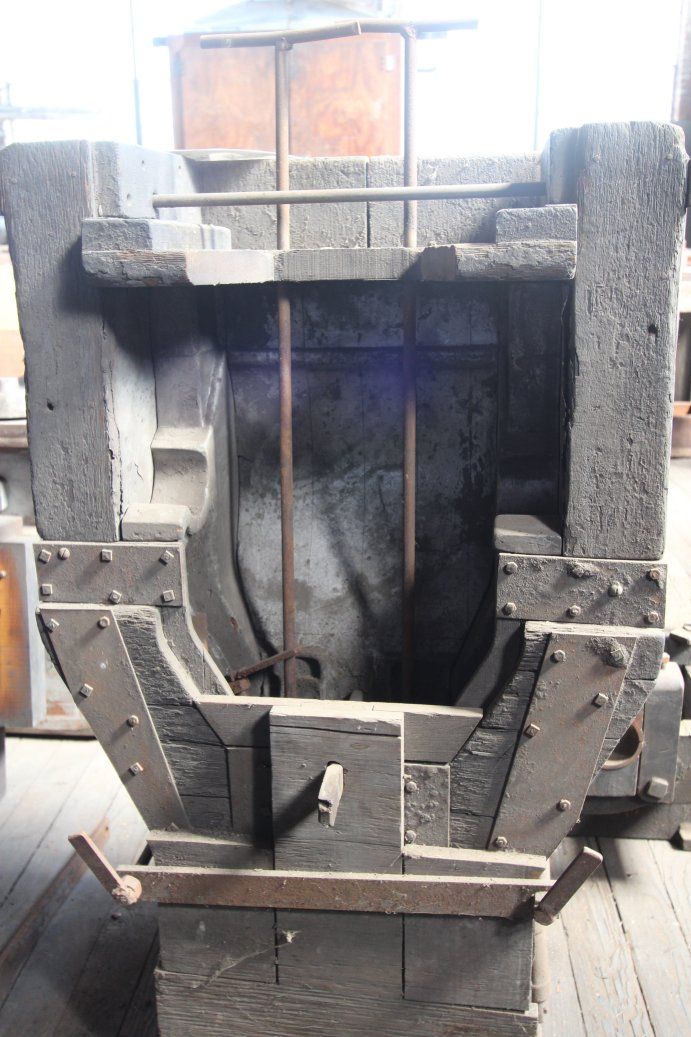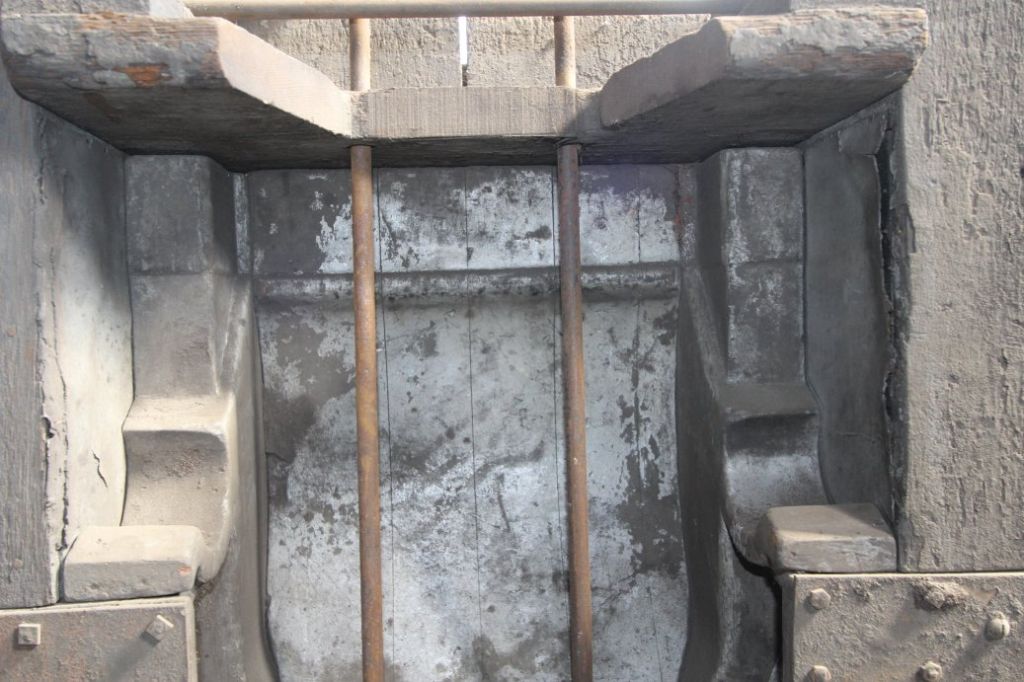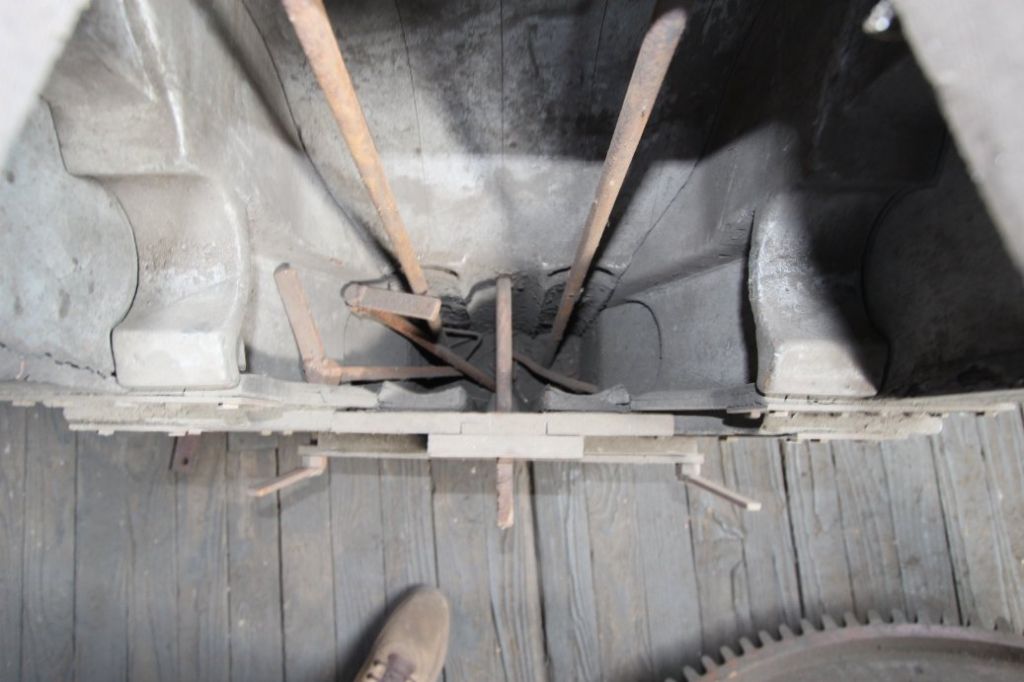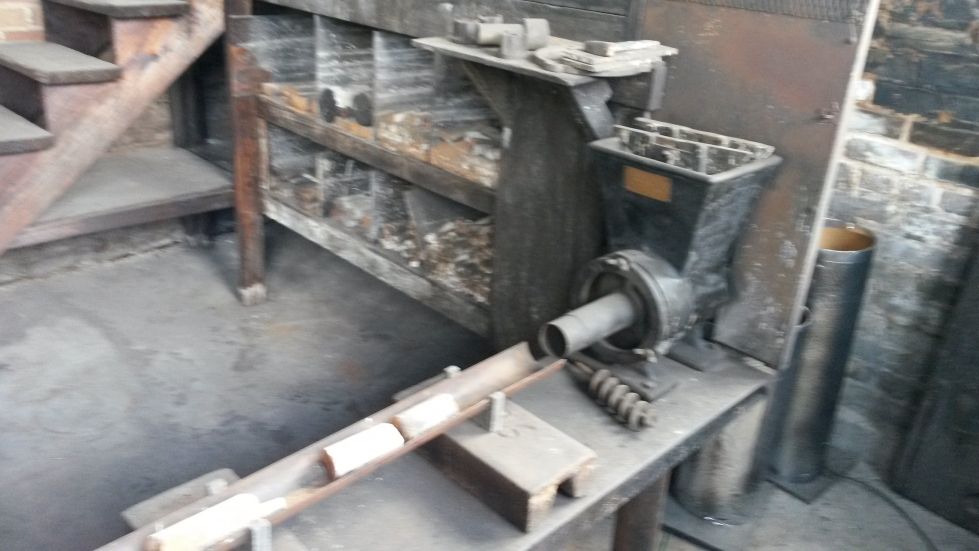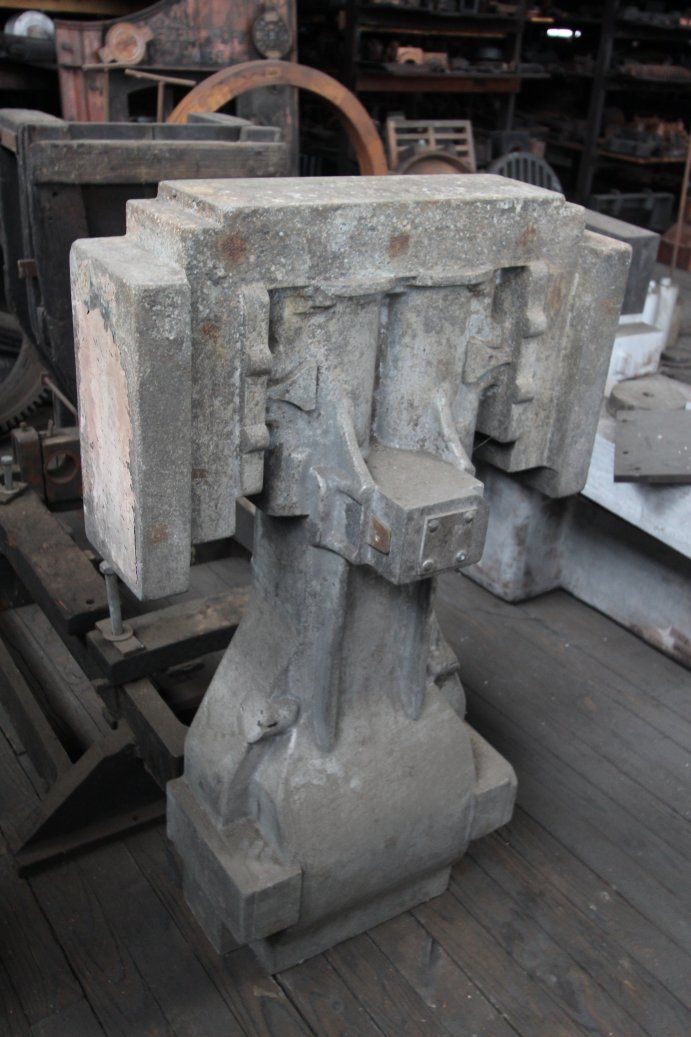I originally set up some calcuations for spure, runner, and gate sizes, and thought I was accomplishing something.
When I studied a number of old commercial patterns, I found the runner and gate configuration varied widely, and yet all of the patterns I saw had been successfully used to create thousands of engines.
I was very confused about the sprue/runners/gates/risers until I ran across Bob Puhakka's explanation of how he sets up his casting system.
I don't calculate anything anymore, and that does not cause problems.
I basically use a sprue that generally 3/4" in diameter, or sometimes 1" diameter, tapered.
I use a smooth curved transition into one or two V-shaped runners that are generously sized, perhaps 3/4" tall, 1/2" wide at the top, and 3/8" wide at the bottom.
The runners extend from the base of the sprue to a spin trap at the end of each runner.
A spin trap is just a straight vertical hole, perhaps 1" in diameter, and the runner enters the spin trap on a tangent point. The spin traps extend upwards and out the top of the cope.
I don't use filters.
I use one or more thin wide gates located on the top of the runners, approximately 1/2" wide, and about 1/8" deep, and that size varies a bit depending on the size of the casting.
My system uses the gates to control metal velocity.
I pour directly into the sprue, keeping the lip of the crucible right at the top of the sprue.
I don't extend the sprue above the top of the cope, but I do use a metal ring about 3/4" tall and about 3" diameter, on top of the mold at the sprue, as a sort of pour basin.
The sprue is filled as fast as possible, and then kept full for the entire mold fill.
The initial aspriated air, slag, loose sand, etc. is swept down the runners and into the spin traps.
The spin traps prevent any sudden kickback in pressure, which would cause metal to be ejected violently into the mold cavity.
The generous runners fill first, and the cooler front of metal is swept into the spin traps.
Once the level of metal rises to the top of the runners, the entire runner system is full of hot metal, and the mold begins to fill. The gates act to control flow to yeild an even laminar fill of the mold with no splashing.
The gates also do a final skim of the slag off of the top of the iron.
The high spots on the top of the mold are vented, since resin-bound sand does not vent well due it its lack of porosity.
Occasionally I use a riser if there is a thick part of the casting, to prevent a thinner part of the casting from drawing from the thicker part during metal solidification.
The iron casting remains in the mold for 24 hours, or until completely cool, so as to prevent chills (hard spots) in the metal. No annealing is required. The iron will be easy to machine and drill. For castings thinner than about 3/4", I use a slight amount of ferrosilicon 75%.
So far, this method has worked every time I have used it for every iron casting of any shape, and has produced defect-free gray iron castings repeatedly.
I never have to re-cast anything.
I generally use two runners, one on each side of a pattern, and gates on opposite sides of the pattern, so as to reduce the fill travel distance inside the mold by 1/2.
.
Edited By PatJ on 05/07/2022 16:25:14
noel shelley.


